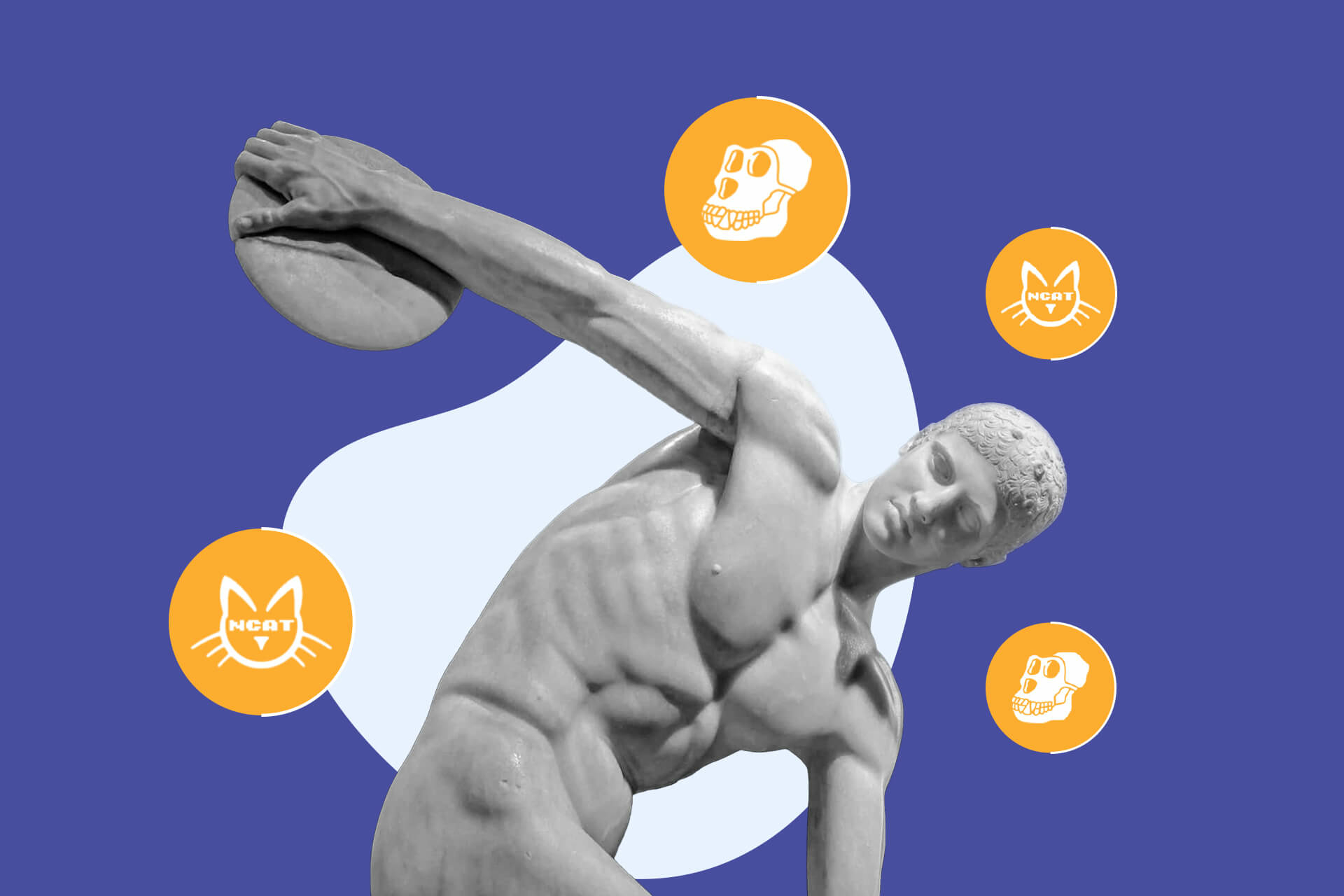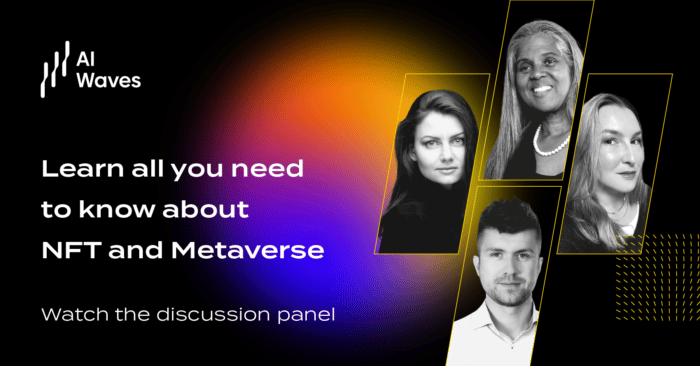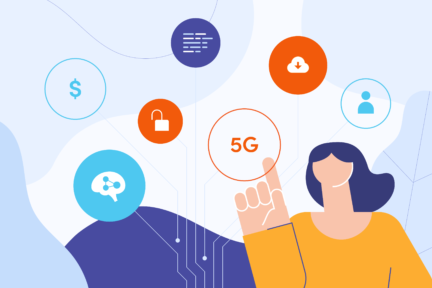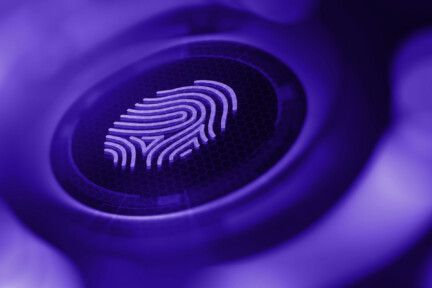If you don’t follow the Web 3.0 scene, all this hype over the bunch of JPEGs may have appeared a bit all over the top. But there’s much more to it than just some funny pictures. Our mission today is to show the full potential of NFT and metaverse from the business perspective.
It seems like it happened from day to night. One day no one heard about the NFTs, and on the other, everyone was buying tokens. But the NFTs weren’t born out of anywhere. Instead of a Big Bang, it was rather a continuous process, first fuelled by the gaming world and then – the crypto market.
Is it a revolution? After the spectacular beginning, the buzz around NFT has calmed down a little – but it’s actually now that we are discovering the variety of its applications and the new quality it can bring to the various digital services. NFT has changed the face of the art market, but it is already sinking into other niches.
We would risk saying that the revolution is just around the corner, but it may look a little different than we have expected. We will try to capture it, including real-life examples and use cases.
Let’s delve into the world of Web 3.0, starting from the most basic concepts. Even if you don’t know much about the NFTs and Metaverse, this article will help you dive deep into its new fascinating reality emerging in front of your eyes.
What is NFT?
To start, let’s get into the very basics. To understand what exactly NFTs are, we should first break down the difference between cryptocurrencies and tokens. Both tokens and cryptocurrencies represent digital or physical assets, but the category of the token is much broader.
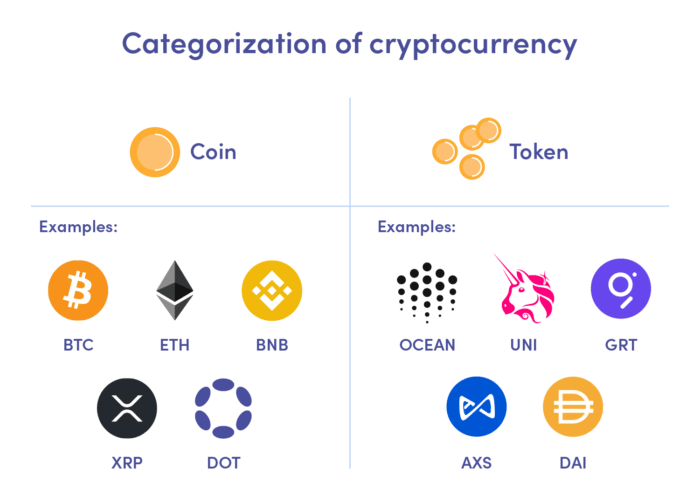
Cryptocurrencies are, in a nutshell, digital money, a medium of exchange that does not involve any central authorities. Tokens also serve this purpose, but they have many other functions. They can be summed up as virtual artefacts that carry value. Tokens can represent a physical artefact that already exists or be entirely independent of it.
NFT (non-fungible token) stands out with one distinguishing feature – you cannot convert it or exchange it for another NFT. Once released, it’s unchangeable – an asset embedded in it will always remain the same. As a result, NFTs are basically impossible to forge. That uniqueness makes it a perfect tool for collection purposes.
What can the NFTs carry? In fact, anything that you can attribute value to. Because of their roots in digital art, we got used to associating NFTs with visual assets, but the truth is, the sky is the limit.
Any asset, whether it’s a product, service, fact, or event, can be converted to a non-fungible token.
You may ask, what’s the use of that opportunity if you are not interested in creating collections and investing in digital assets? Here’s where the utility NFTs come to the scene!
What is Utility NFT?
Utility tokens provide the users of a particular blockchain with access to a product or service. They often serve as a medium for granting valuable incentives. NFT utility tokens combine the utility factor with the uniqueness of the NFT. Utility NFT goes beyond the function of representing value, gaining practical applications the users can benefit from.
We are aware it may sound vague – so let’s illustrate the potential of utility NFT with an example. Let’s imagine you are a retailer and you are carrying out a promotional campaign. As its part, the most active customers will be granted a coupon of a particular value to spend in the online store. Each coupon is unique, but they all have the same purpose. The utility NFT token can represent the coupon, protecting its authenticity.
How do NFT work: smart contracts and assets
While cryptocurrencies have their own blockchains, tokens can be created on any blockchain in unlimited amounts. It can happen via smart contracts – programs that self-execute themselves based on the agreement’s provisions. The rule is simple: if the particular condition in the contract is met, a particular action is automatically triggered.
Smart contracts allow users to sell and buy unique NFTs. To be able to do that, you first need to create a wallet that will enable you to carry out transactions on Ethereum or Tezos – two fundamental networks in the NFT universe. There are numerous options you can go for, so just do your research and get it started!
Now that we have all definitions cleared up, let’s move to the most exciting part. What are the origins of NFT, and how do we use them today across industries?
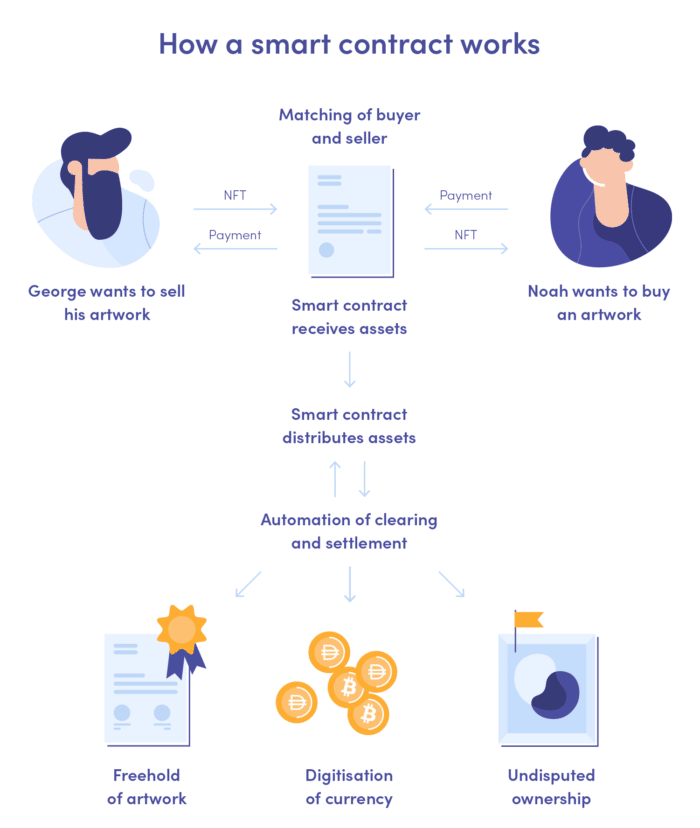
NFT boom – how has it all started?
As you know already, NFTs wouldn’t exist without blockchains. And blockchains, even though today we are starting to use them for different purposes, are tied to the crypto market at its root. Once Bitcoin was created, the development of blockchain solutions gained momentum, opening the door for numerous cryptocurrencies to arise. NFTs are a byproduct of this process that has soon constituted its own path.
Once the users started to get familiar with the to-date abstract concept of digital assets, global excitement arose. We have noticed that these investments can have an impressive return in a short time and fell in love with their decentralised character which promised unprecedented safety and independence.
Blockchain has granted us an opportunity to allocate capital in the early stage projects that we see potential in, fueling the growth of VC investments sector. NFT was next on the line to embrace. We were already familiar with a general idea of a digital assets, and now we grew ready to set this idea apart from the money.
Or, otherwise, the market forced us to be. It’s hard to point out the exact moment, but most analyses mention Christie’s auction of the NFT file created by Beeple – a digital artist that combined 5000 artworks made day by day into a digital collage. It was definitely a breakthrough, particularly that it was one of the most lucrative transactions ever made in the art world.
You probably know the rest of the story – at least briefly. In a few years, we passed a long way from collecting JPEGs of bored apess and buying digital equivalents of someone’s body parts or even literally… nothing to applying NFT in HR and marketing. Of course, collecting is still at the core of NFT revolution, and there is nothing wrong about it. However, the non-fungible tokens proved to be much more versatile than we initially expected!
Benefits of NFT. What’s the hype about?
Every painting you paint is one of a kind. Even if you make a twin copy, there is only one original. This authenticity contributes to its value.
NFTs replicate this mechanism in the digital sphere. Every token you create is unique, and even if you reproduce the visual asset it represents, you will end up with a valueless copy. At the same time, the blockchain solves the main issue with the physical assets, which is the verification of the authenticity. You can always attempt to create a twin copy of the painting, and if you succeed, even the experts will struggle to verify whether it is authentic or not. Things are different with NFTs, since they are impossible to fake.
Now that we emphasised that, you can understand better why NFTs are a such hot topic in the art market.
- They allow the artists to protect the authenticity of their creations, which has been becoming more and more difficult in the Internet era, even though we are long over the online Wild West years.
- They help them regain control and ownership over their artworks. Look at the Nyan Cat case or the iconic memes whose creators are finally getting paid!)
- They provide them with access to new channels of income – they can sell both real artworks and their digital equivalents.
- They democratise the art market which until recently would be quite hermetic and based on the net of dependencies. Now it is easier to access potential customers without cooperating with the galleries. That makes them much more accessible in terms of price.
But hey – they’re still just digital pictures, so where’s the value? Well, isn’t value a form of an agreement? Take the example of money – if we wouldn’t agree that they represent some value, it would be just a bunch of paper bills. In our society, authenticity is a value in itself, and NFT certifies it. It’s as simple as that.
NFT use cases
You already know how NFTs can be used by the creators. But how else can they benefit businesses? There are many fascinating possibilities for using them to streamline and secure transactions and verification processes.
Many companies are already combining it with the marketing potential NFTs carry, making it their trademark. That was the case with the Flyfish club, the first member-only dining club based in New York. The membership is purchased with Ethers and certified in a form of a non-fungible token. Only its holders can book tables at this concept restaurant. NFTs facilitate membership processing, but the truth is, their marketing value is the real deal here.
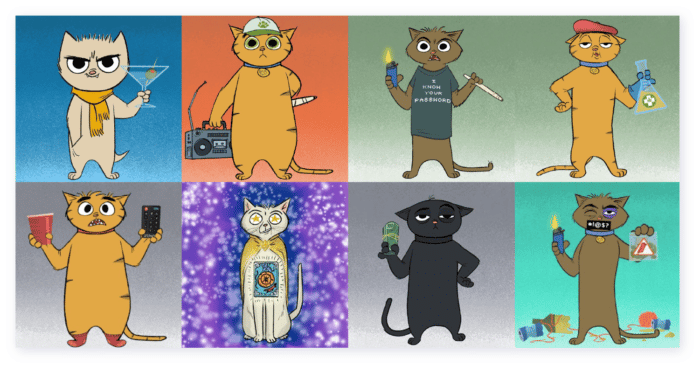
Stoner Cats is another example of how NFTs can fuel profit. In this particular case, the use of non-fungible tokens has allowed the creators of the adult animated short series to remain independent of the streaming platforms. NFT serves the purpose of buying access to the content. Their use undoubtedly drove the buzz around the project. Regardless of its value, it could easily disappear in the sea of content the streaming platforms have to offer, and, this way, it’s one of its kind!
How else can we use NFTs in business scenarios? Here are some inspiring NFT use cases that may get into the mainstream soon,
Human Resources
In HR, NFTs can bring new qualities to the recruitment processes. Today, recruiters have to give the candidates the benefit of the doubt or take a long time to verify their resume in a traditional way – by calling their previous bosses or researching their profiles. Non-fungible tokens could change that, serving as proof for the declared career path. The employers could issue NFTs to certify the employee’s experience. Actually, the platforms that enable that already exist, and they will likely gain more attention in the nearest future.
Events
Remember the example we used to illustrate the potential of the utility NFTs? The sector of events could benefit from the introduction of non-fungible tokens tremendously. The issue of faking tickets and selling them on a secondary market at crazily inflated prices is quite common in the industry. NFTs, as authenticity certificates, prevent these situations from happening, making it impossible to copy or fabricate the tickets. They can serve both online and real-life events. NFTs can also draw engagement and strengthen the organiser’s tech-savvy, up-to-date image.
What is Metaverse, and why should we care about it?
Now that we delved deep into the subject of NFT, exploring the Metaverse seems like a natural consequence. The term “metaverse” originates in the 1980’s science fiction novel – but like many sci-fi concepts, it has turned into reality sooner than we all expected. In a nutshell, the Metaverse is a three-dimensional, immersive Internet that brings social interactions to a new level and creates channels for new economies to evolve.
In practice, it provides us with the digital experiences closest to real-life as a result of incorporating VR, AR, AI, and advanced data processing techniques. Online schooling, events, and social gatherings all gain a different edge with the qualities the Metaverse offers.
Entrepreneurs see the potential of the Metaverse and do not hesitate to capitalise on it, creating platforms that bring connectivity and immersive experience to the next level. The first example that comes to mind is, of course, Meta, the Facebook founders’ project that aims at revolutionising the way we socialise. They already managed to do it once, and despite some issues and controversies, they may manage once more.
Gaming platforms naturally are heavily investing in the metaverse, enabling gamers to experience another dimension of the worlds created. The Sandbox allows them even to create their own ones (without any coding skills), contributing to the constantly expanding metaverse. In Decentraland, on the other hand, the users can buy plots of virtual land, building their own digital haven or a business hub. Many brands, including Samsung and Sotheby’s, have already taken that opportunity.
Which challenges does Metaverse solve?
The idea of the Metaverse existed long before the Covid-19 pandemic. However, the worldwide lockdown has proven its potential in solving various issues. Being separated from each other, we found refuge in the online world. With its use of virtual reality and augmented reality, the Metaverse makes our interactions feel more real, breaking the “digital wall”.
As we will likely continue to invest in online education and events due to the flexibility and safety they provide, such advancements appear to be necessary. Let’s follow the education example. With traditional communication tools, the barrier between the teacher and the students participating in the class is undeniable and may affect the studying results. Metaverse enables the participants to feel like they are actually in the classroom, driving engagement and focus.
Metaverse also creates the areas for new kinds of economies to evolve, boosting entrepreneurship. This feature proved to be empowering in the countries’ economies that were the most affected by the pandemic (Axie earn-to-play gamers rise could be an example). We want to import the rules of the real world to this new sphere, taking care of our digital looks and living our digital experiences.
Metaverse and the fashion industry
Here’s where NFTs come to the scene. Companies (including the most recognizable brands like Nike or Gucci) are using the tokens to introduce their products to the Metaverse. You can simultaneously buy a physical pair of the newest sneakers and get their digital equivalent to shine in the digital reunions.
Even though this idea is still raising doubts, it is not new at all – take a look at the gamers buying and selling skins for their characters. And while the fashion industry is struggling to reduce its environmental impact, digital fashion can promote trends without harming the environment at all.
The shift from physical to digital could be thus revolutionary. And as abstract as it may seem at first glance, it is gaining momentum! Decentraland has even held a metaverse Fashion Week, engaging such fashion legends as Dolce and Gabbana, Elie Saab, and Estee Lauder.
Metaverse and events
Online events can be a poor substitute for real-life ones, as we’ve seen in the pandemic. But the metaverse makes it possible for them to provide a comparable experience while overcoming the boundaries of distance. That’s a great opportunity both for the organisers and the participants. The first gain new channels of income while making their art or content more accessible. And the others do not have to cross half of the world to participate in the concert of their dreams or any other type of event. Utility NFTs can be used here as a way to grant secure access to the event.
Looking at all these changes, it seems that the revolution is already taking place in front of our eyes. We are here to embrace it, and we would love to help you with that, too! If you need consulting support or software development partners that will help you incorporate NFT into your business strategy, reach out to us, and don’t forget to sign up for our AI Waves #6 event!

